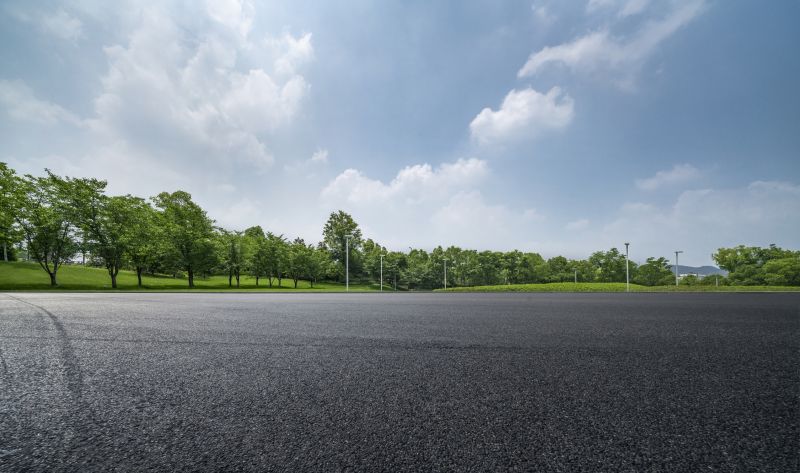Popular Parking Lot Surface Products For Enhanced Durability
Evaluate top options that provide resilience against wear and tear, making your parking lot maintenance easier and more effective.
 Parking lot resurfacing is a critical aspect of maintaining functional and safe outdoor spaces for commercial, industrial, and residential properties. Selecting the right products for resurfacing projects involves understanding various materials, application methods, and durability factors. From asphalt and concrete overlays to specialized sealants and repair patches, the options available cater to different needs and budgets. Proper resurfacing not only enhances the appearance of a parking lot but also extends its lifespan by preventing deterioration caused by weather, traffic, and other environmental factors.
Parking lot resurfacing is a critical aspect of maintaining functional and safe outdoor spaces for commercial, industrial, and residential properties. Selecting the right products for resurfacing projects involves understanding various materials, application methods, and durability factors. From asphalt and concrete overlays to specialized sealants and repair patches, the options available cater to different needs and budgets. Proper resurfacing not only enhances the appearance of a parking lot but also extends its lifespan by preventing deterioration caused by weather, traffic, and other environmental factors.
Top Overall Option
Premium Asphalt Overlay Material
A high-quality asphalt overlay material designed for durability and ease of application. It provides a smooth surface that can withstand heavy traffic and resist weather-related damage. Ideal for resurfacing existing asphalt pavements, it offers a reliable solution for long-term performance and minimal maintenance.
Types of Products For Parking Lot Resurfacings
Asphalt Mixes
Various asphalt formulations tailored for different load capacities and climate conditions, suitable for overlays and repairs.
Concrete Resurfacing Products
Specialized concrete overlays and coatings for a durable, smooth finish, often used in areas requiring high strength.
Sealants and Coatings
Protective sealants and surface coatings that shield against moisture, UV rays, and surface wear.
Pothole Repair Patches
Ready-to-use patches for quick repairs of potholes and minor surface damages.
Crack Fillers
Materials designed to fill and seal cracks, preventing water infiltration and further deterioration.
Surface Marking Paints
High-visibility paints for parking lines, symbols, and directional markings.
Infrared Asphalt Repair Equipment
Tools and systems for heated asphalt patching, ideal for seamless repairs.
Polyurethane Sealants
Flexible sealants suitable for expansion joints and cracks, maintaining surface integrity.
Bituminous Coatings
Protective coatings formulated for asphalt surfaces to enhance longevity.
Resurfacing Mats and Sheets
Pre-fabricated overlays that can be quickly installed over existing surfaces.
Drainage Improvement Products
Products designed to improve water runoff and prevent pooling on the surface.
Edge Restraints and Curbs
Materials to define parking lot boundaries and prevent surface erosion.
Popular Choices
Widely used for sealing cracks and preventing water intrusion, available in various formulations.
Commonly applied to protect asphalt surfaces from wear and weathering, enhancing appearance.
A versatile patching material suitable for quick repairs in high-traffic areas.
A popular choice for restoring concrete surfaces with a smooth, durable finish.
High-visibility paints used for marking parking spaces and directional arrows.
A trending method for seamless asphalt patching with minimal surface disruption.
Flexible sealants used to accommodate joint movement and prevent surface cracking.
Popular for providing a protective layer on asphalt surfaces, extending lifespan.
Prefabricated overlays favored for quick installation and surface uniformity.
Essential components for effective water management on resurfaced lots.
Widely used for enhancing visibility of parking lot markings and safety signs.
Cleaning products essential for preparing surfaces before applying resurfacing materials.
A trending repair product suitable for large potholes and surface damage.
Popular equipment for applying sealants evenly across large surface areas.
An alternative to traditional paint for quick, durable parking lot markings.
Comprehensive kits that include various materials for small to medium resurfacing projects.
Markers for creating durable, high-visibility parking lot markings.
The process of resurfacing typically begins with assessing the current condition of the lot, identifying areas of damage such as cracks, potholes, and surface erosion. Depending on the extent of wear, professionals may recommend different products to prepare the surface for a new layer or to reinforce existing materials. High-quality products can improve safety by reducing slip hazards and providing clear markings, while also ensuring compliance with relevant standards and regulations.
Choosing the appropriate resurfacing products involves considering factors like load capacity, climate conditions, and the expected traffic volume. For example, heavy-duty asphalt mixes are suitable for areas with frequent vehicle movement, whereas lighter overlays might suffice for less trafficked zones. Additionally, surface coatings and sealants can be applied to protect the underlying materials from moisture ingress and UV damage, thereby reducing long-term maintenance costs. Proper application and curing are essential to achieve optimal results, making it important to select products compatible with existing surfaces and installation methods.
Key Buying Considerations
- Assess the current condition of the parking lot to determine the appropriate resurfacing approach.
- Consider the expected traffic volume and load capacity to select suitable materials.
- Evaluate climate factors such as freeze-thaw cycles, moisture levels, and UV exposure.
- Choose products compatible with existing surfaces to ensure proper adhesion and performance.
- Determine whether a surface sealant or coating is necessary for added protection.
- Look for products that offer ease of application and curing times suitable for your project schedule.
- Check the durability and longevity of materials in relation to your maintenance budget.
- Ensure the selected products meet local safety and regulatory standards.
- Consider the environmental conditions that may affect material performance over time.
- Plan for proper surface preparation before applying any resurfacing products.
- Factor in the ease of repair and future maintenance needs.
- Select products with proven performance in similar environments or conditions.
- Review manufacturer instructions carefully to optimize application techniques.
- Think about the aesthetic aspects, such as color options and markings, if relevant.
- Budget appropriately for both initial resurfacing and ongoing maintenance to achieve the desired lifespan.
